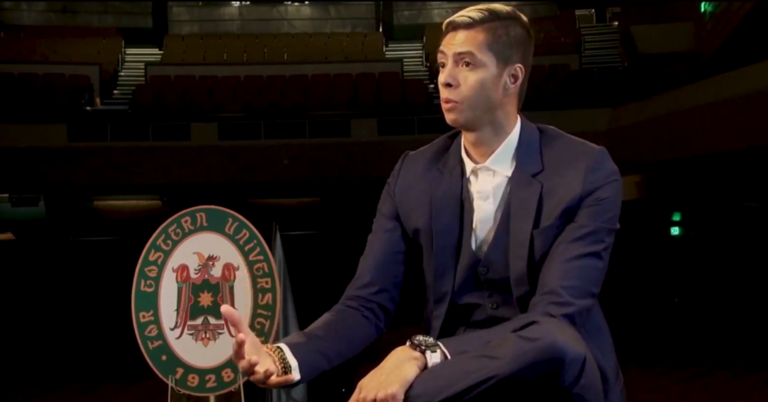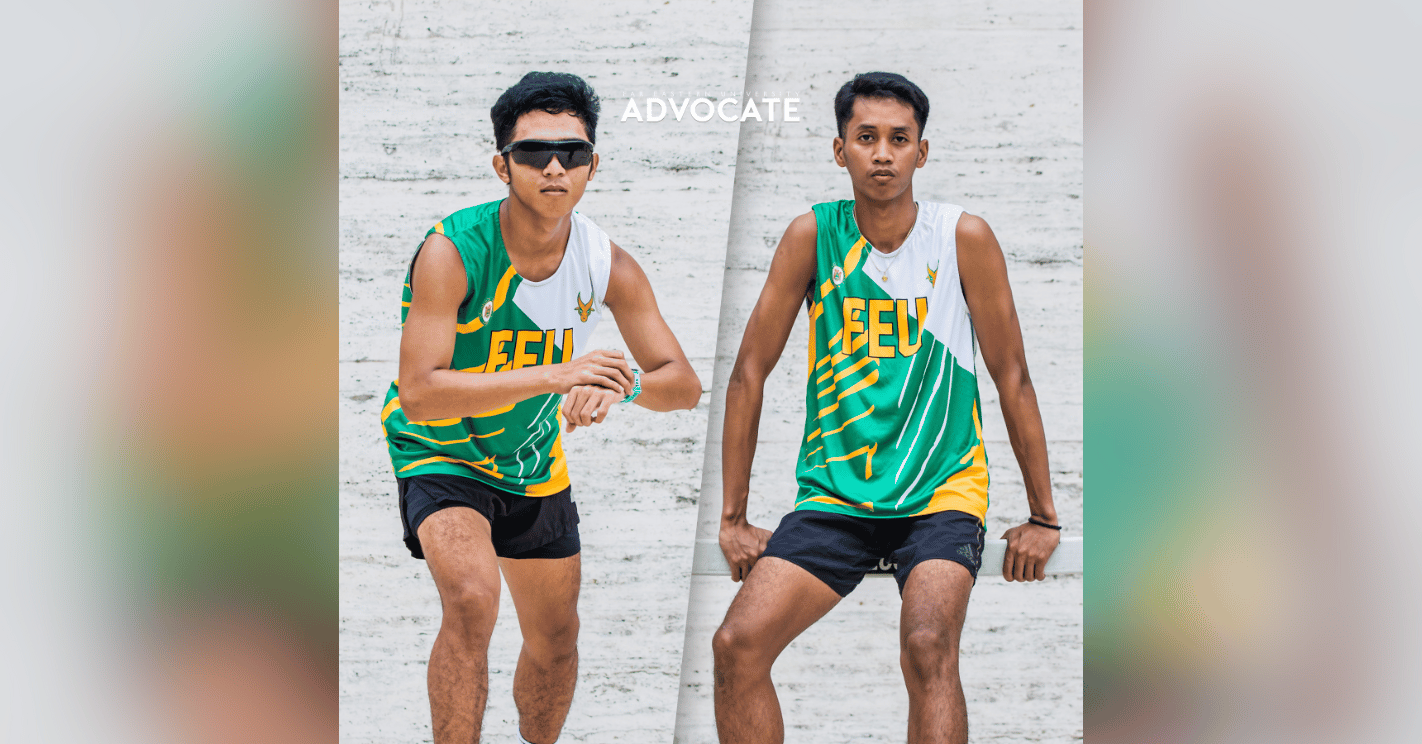
FEU boosts pandemic efforts, procures COVID-19 vaccines for faculty and staff
- September 20, 2021 03:54
FEU Advocate
December 21, 2022 11:23
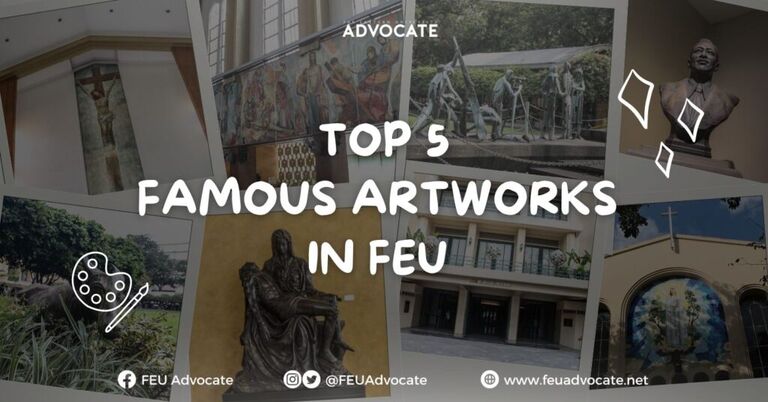
“Oasis of the University-belt, in the heart of downtown Manila”—deserving of this title, Far Eastern University (FEU) never fails to stand out among other universities with its outstanding style and designs. Through these, Tamaraws are ought to walk with pride down thy happy and aesthetic halls.
The University is not only recognized for its well-structured buildings, thoroughly-planned layout, and durably-built materials. FEU is also known to be a gallery, housing artworks varying from buildings, paintings, and sculptures by different artists from local to international scale. These were created during the period of an art movement that emphasized symmetry, geometry, and the Industrial Age.
The green and gold campus was even recognized by the United Nations Educational, Scientific, and Cultural Organization (UNESCO) for its cultural conservation efforts. It is now the largest Art Deco complex in the Philippines.
Delving into craft and history, let us take a dainty tour of the artworks that symbolized the University’s craftsmanship and excellence.
Cubist Sculpture of Vicente Manansala

Found at the very heart of the thy happy halls, is a copper-made sculpture of cubist painter and National Artist Vicente Manansala. The artist was commissioned to create a public sculpture that captures and emphasizes the idea and educational philosophy of FEU’s founder, Dr. Nicanor Reyes Sr., which is to promote the teachings of Accountancy to Filipinos in a time where it was only taught to the foreigners.
He then presented the sculpture Dr. Nicanor Reyes Memorial Quadrangle which comprises four platforms; each with a corresponding meaning and message. The first sculpture shows the right to education & life, and freedom of speech & from hunger. The second has the Kalantiaw code which represents bravery, wisdom, and justice. The third depicts the institutes of FEU. And lastly, the fourth sculpture which represents the three main lands of the Philippines, 10 commandments, and the university seal.
Since the sculpture is made up of pure copper, it turns to patina green over time from its original gold color, representing the FEU banner.
Crucified Christ of Carlos Francisco
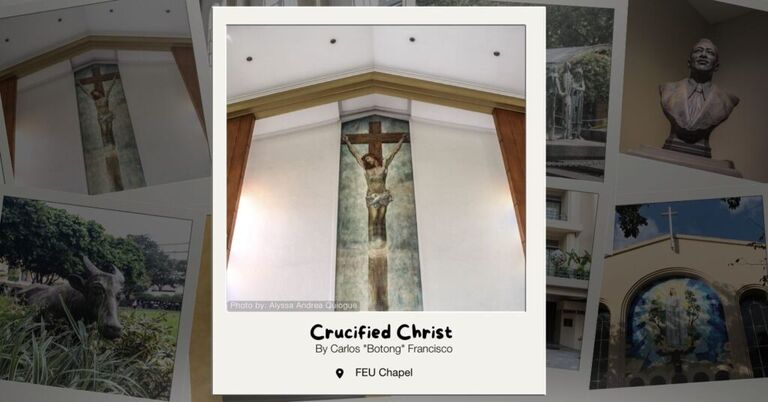
Being the inclusive and diverse FEU Community, the University has opened its multi-faith prayer room and chapel. Under the titular patronage of Our Lady of Fatima, the chapel was built to accommodate 300 people. It has an adoration chapel, spacious choir loft, wide set Romanesque glass windows, and an image of the Crucified Christ painted by the Master of Angono and 2nd National Artist, Carlos “Botong” Francisco.
On August 1, 1956, the oil on canvas painting was signed by a Filipino mural painter. The Crucified Christ serves as a focal point of the chapel for its unique distinction. Preserved until now, many church-goers find the art piece extraordinary, even placed by the altar to be seen by everyone.
La Pieta of Napoleon Abueva

As the FEU Chapel became grounds for sacred religious items, it welcomed numerous artworks aside from Carlos Francisco's, such as La Pieta of the Father of Modern Philippine Sculpture and National Artist for Sculpture Napoleon Abueva.
Abueva's contribution, which portrays a child being held by a mother, was crafted in pure fiberglass. It is an interpretation of the original artwork of Michelangelo’s La Pieta located in St. Peter's Basilica in Vatican City. This is placed on the right aisle of the FEU Chapel upon entering the main door (side of the Freedom Park).
Symmetrized Buildings of Pablo Antonio
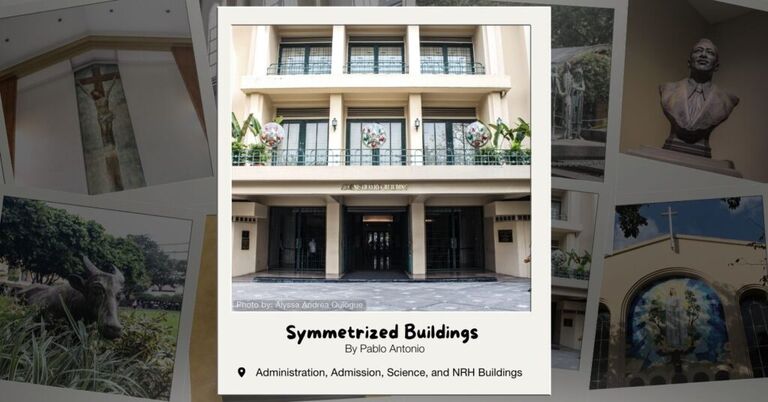
The buildings of Administration, Science, Nicanor Reyes Hall (NRH), and Institute of Architecture & Fine Arts (IARFA), that we see today are actual works of art as well. Between 1938 and 1950, Pablo Antonio designed several buildings on the campus in Art Deco style. The artist is also known to be the founder’s brother-in-law, a pioneer of modern Philippine architecture, and a National Artist.
The four buildings Pablo Antonio had designed were previously called Boys’ High School, Girls’ High School, and Administration and Science Building. As a result, the FEU campus is considered the largest ensemble of surviving Art Deco architecture in Manila.
Focusing on symmetry, Pablo Antonio put his very own signature of artistry on FEU’s buildings, seeming proportional to each other in terms of dimensions, style, color, and location.
Tamalito of Dr. Menardo Jimenez
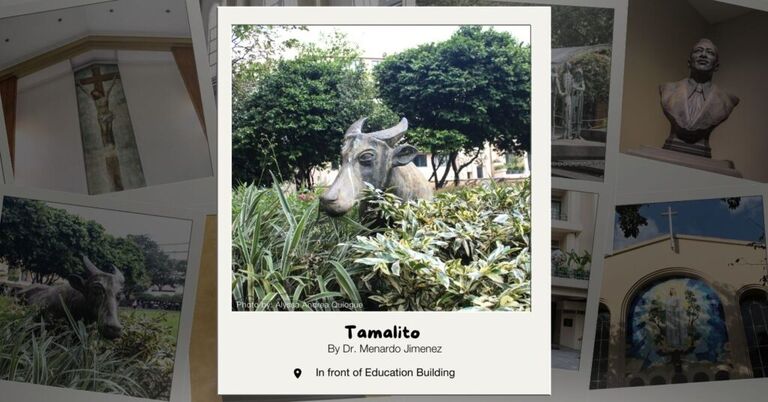
Found in front of the Education Building is Tamalito, the mascot of the University. Made from bronze, Tamalito is similar to an actual adult-sized Tamaraw which is endemic to the island of Mindoro.
Sculpted by Peter de Guzman, Tamalito was donated by Dr. Menardo "Mang Nards" Jimenez, an alumnus from FEU- Institute of Accounts, Business, and Finance (IABF), as his way of giving back to his Alma Mater. Mr. Jimenez sees the Tamaraw as a fleeting symbol of strength, clarity of purpose, and value for hard work which are the characteristics that resemble the FEU students and alumni. Tamalito’s official inaugural event happened last October 1, 2012.
Even after being considered a tourist landmark by many people, FEU remains appreciative of these masterpieces by giving them the recognition and acknowledgment they deserve, together with their respective artists.
Look beyond the surface, and search behind the walls—the Green and Gold Oasis holds something within that no outward appearance can ever outweigh. With these obra maestras’ messages, values, and principles, the University proves how inner beauty matters the most. Close your eyes, open your heart and mind, and let the beauty of artistry and craftsmanship take you somewhere far better than the material world we live in.
-Brit Charles Quevedo

